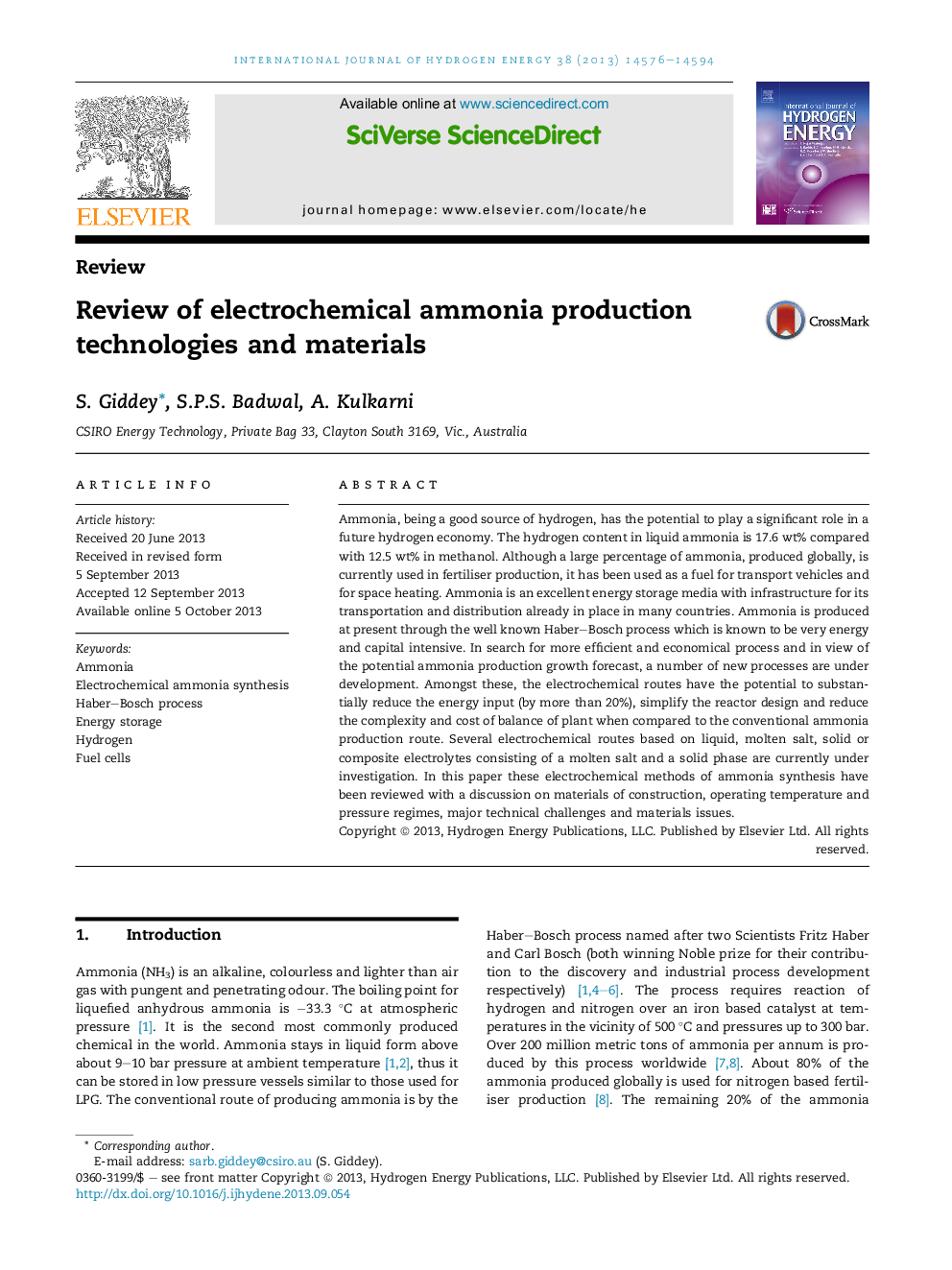| Article ID | Journal | Published Year | Pages | File Type |
|---|---|---|---|---|
| 7721120 | International Journal of Hydrogen Energy | 2013 | 19 Pages |
Abstract
Ammonia, being a good source of hydrogen, has the potential to play a significant role in a future hydrogen economy. The hydrogen content in liquid ammonia is 17.6Â wt% compared with 12.5Â wt% in methanol. Although a large percentage of ammonia, produced globally, is currently used in fertiliser production, it has been used as a fuel for transport vehicles and for space heating. Ammonia is an excellent energy storage media with infrastructure for its transportation and distribution already in place in many countries. Ammonia is produced at present through the well known Haber-Bosch process which is known to be very energy and capital intensive. In search for more efficient and economical process and in view of the potential ammonia production growth forecast, a number of new processes are under development. Amongst these, the electrochemical routes have the potential to substantially reduce the energy input (by more than 20%), simplify the reactor design and reduce the complexity and cost of balance of plant when compared to the conventional ammonia production route. Several electrochemical routes based on liquid, molten salt, solid or composite electrolytes consisting of a molten salt and a solid phase are currently under investigation. In this paper these electrochemical methods of ammonia synthesis have been reviewed with a discussion on materials of construction, operating temperature and pressure regimes, major technical challenges and materials issues.
Related Topics
Physical Sciences and Engineering
Chemistry
Electrochemistry
Authors
S. Giddey, S.P.S. Badwal, A. Kulkarni,
